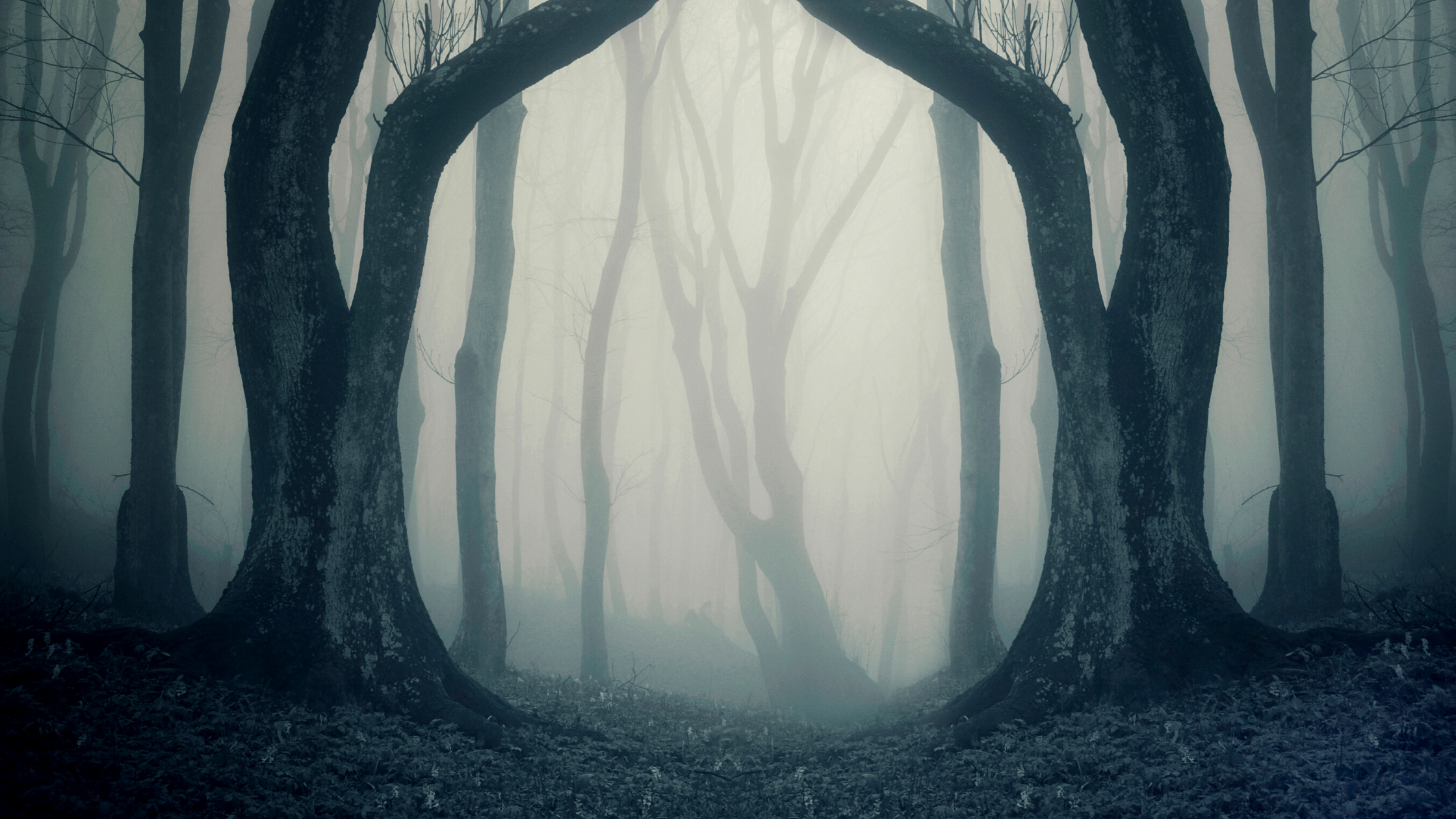Tolkien Tuesday: Tom Bombadil and World Building that Creates Deep Themes
Art by the Hildebrandt Brothers
Here’s a hot take for book elitists out there: Peter Jackson’s movie adaptation of The Lord of the Rings is perfect.
I don’t know how you would cram those three books into movies any better than he and his writing team did.
You can bitch all day about what was left out or how characters were changed, but without those changes, the whole pace of the series would have been radically altered. I’m not saying he’s the perfect director or anything (see The Hobbit series), but in this case, he made a masterpiece.
If anyone ever tries to tell me the movies did a disservice to the books, I mention one thing: Tom Bombadil.
(Ok, I also mention the pacing at the beginning of The Fellowship of the Ring and the entirety of The Two Towers, but just saying Tom Bombadil is punchier. Except, I kind of ruined that now to give you this explanation. Hmm.)
Tom Bombadil is the most random, out of place character in the entire trilogy. He sings, he has a super hot wife, extraordinary long beard, sweet kicks, and mysterious enchantment follows him all over the place.
Just look at him! (Art by the Hildebrandt Brothers)
He also takes the story in a direction that feels entirely out of place on the surface.
Dig a little deeper, though, and his chapters reveal deeper themes in the story. And they give us writers some great storytelling techniques to pay attention to.
But people don’t ask the right questions about Tom Bombadil. He’s part of a long legacy of geeks completely missing the point.
Don’t Cater To Those Geeks In Your Story
If you’re still reading this, I know two things about you: you’re a geek, and you’re a writer. Welcome, you are definitely in the right place.
And apologies if this section title offends you. But hopefully, you will realize something before we explore the themes ol’ Tom Bombadilo unveils.
Geeks love trying to figure out who the best characters are. They go about this in an extraordinarily analytical fashion.
It’s not just about who, for example, is the best Marvel character. It’s who would beat who in a fight and why. There are entire arguments about the power levels of each character.
The same goes for Star Wars. God forbid you think anyone is more powerful than the Emperor, or you might get the entire Star Wars subreddit jumping down your throat.
I especially love when geeks throw two characters that would never have problems with each other into a fight. Like, would Picard kick Kirk’s ass? First, how many times did you see Picard throw a punch in Next Generation? Second, why are they fighting? Third, you completely miss the point of who those characters are.
I’ve seen this mentality with Tom Bombadil too.
What is he? How powerful is he? If he left the Old Forest, would he be helpful? Couldn’t he just take the Ring to Mordor himself? Why doesn’t he keep it in the Old Forest if he’s so powerful? Is he more powerful than Gandalf? If he encountered a Balrog, would he…
SHUT UP! Oh my GOD, no one cares!
Where this gets toxic is when geeks think they know a character in a story they didn’t write so well that if you do anything that goes outside what they think that character is capable of, you are ruining their childhood or some stupid shit.
Not thinking of anything in particular in this rant…
Don’t cater to these kinds of geeks.
Cater to the ones that explore the deep themes and meaning behind your prose and characterization. They’re the ones looking to bring out the power of your story.
Speaking of themes…
How World Building Should Reveal Theme
Like I said earlier, Tom Bombadil and all the plot points connected to him seem like a random side quest gone wrong.
But there’s a lot going on here, especially in the Barrow-Downs.
Let me give you a refresher (or crash course if you haven’t read the books) on Tom Bombadil before I dive in any further. Here’s a breakdown of what happens with him:
He sings free Merry and Pippin, who get trapped in a tree.
He collects lilies for his wife, who is an...elf? Water spirit? Who knows. I don’t even think Tom knows...or cares, quite frankly.
His whole house has enchantments of every kind flowing through it.
He puts on the Ring, and nothing happens…
HE PUTS ON THE RING AND NOTHING HAPPENS!
He can also command the dead apparently...also with singing. The dude is a lvl 20 bard.
Tom Bombadil lives in the Old Forest, which is like Fangorn if all the Ents broke bad.
Even in times of rest under a great willow tree, the Hobbits find danger before encountering old Tom.
So let’s start with the forest. When the Hobbits enter, hoping to stay off the trail of Ringwraiths (a pro traveling tip for Middle Earth), there’s darkness all around them.
They are lost, hungry (like actual hungry, not Hobbit hungry), and tired.
The Hobbits realize that the dangers of the world are very real. And since the Old Forest is right outside the Shire, they don’t have to go very far to find it.
This imagery is the perfect nutshell for what this adventure will be for all of them. Its darkness and danger that closes in on all sides.
Even the paths of the Old Forest seem to change as the trees move overnight, luring the Hobbits into more dangerous parts of the forest. A perfect symbol of their road ahead that will always be changing, diverted by one evil thing after another.
Looks perfectly safe to me
Then they finally find a place to rest only to be put into immediate danger. Old Man Willow, a tree, uh...eats them? Merry and Pippin, anyway.
This quest already proves that Frodo especially can’t let his guard down.
He panics. As the rest of the Hobbits are battling with their lives, he runs screaming for help, hoping somehow someone answers.
Enter Tom Bombadil.
Here’s where some deep themes are already starting. Frodo doesn’t know what to do. And Tom sees this. I think Tom plays a bigger role than we all realize.
Old Tom saves them, of course, and takes them to rest in his home. After some stories and proving that he can wear the Ring no prob and SEE Frodo wearing it, he proves there’s something more about him than meets the eye.
When he sends them all on their way, they immediately get back into trouble, all thanks to...
The Barrow-Downs.
They enter a place where tombs of long lost Men of old have been for years uncounted. Once again, the Hobbits get too tired to keep their wits about them and end up inside one of the tombs as new residents.
The dead linger there, and a ghastly hand of some kind starts to crawl its way to the Hobbits. Frodo, once again, is awake and put on the spot. He wants nothing else than to get the hell out of there. This might be the end; he has the Ring to consider and the whole fate of everything on his shoulders.
But he remembers the stories Bilbo used to tell and finds the courage to protect his friends. (An interesting little aside about the power of storytelling.)
And once again Frodo said “I’m never drinking again!” (Art by Ted Nasmith)
Then Tom comes back and saves the day.
I think that Tom Bombadil exists in the story as a judge for Frodo. He knows the quest must be completed by someone fully committed to helping those around him. Remember, Tom encounters Frodo not exactly being a hero.
So, Tom puts them in danger on purpose to test Frodo’s heart. And Frodo passes.
The theme here is destroying the Ring is more than just pressing on through darkness...it’s sticking together even when things seem hopeless.
And more, we get to see some super subtle foreshadowing.
The Hobbits have visions while they are in this deathly slumber. Merry sees himself as a Man of old getting stabbed through the heart with a spear. Not a great dream, to be sure.
But he also has a vision “of a great expanse of years behind them, like a vast shadowy plain over which there strode shapes of Men, tall and grim with bright swords, and last came one with a star on his brow.”
We just had imagery of cold swords and dark barrows. The mistakes of Men in the past are all around the Hobbits.
I mean, I could really bore you with some geeky talk about Carn Dum and the Witch King and the fall of Arnor, but just know it has to do with the current state of Gondor now.
This vision, though, switches up this foreboding imagery to talk about tall men, grim yes, but with bright swords and a star on his brow. Guess who they meet in the very next chapter?
Aragorn.
Hellooooo
The horror and terrible tales of the past and the choices that Men made isn’t the end of the story. There’s hope. Aragorn is the future that Men need, that Middle Earth needs. And they are about to meet him.
What Tom Bombadil and the Barrow-Downs Mean for Your Fiction
When you introduce world-building elements to your story, it’s easy to just info-dump.
You made a detailed history of the town your main characters are passing through, after all. Damn it; you’re going to use it.
But that slows down the pace of your story and bores your reader.
Tolkien obviously wanted to talk about the history of the Barrow-Downs, but if they just passed through it and had all these visions, it would have been a big waste of our time.
Instead, he sets up a tense life or death situation. Symbolically the dead represent the choices of the past still influencing the present. But Tolkien doesn’t leave us with just that.
He sets up a powerful foreshadowing weaved into the grim image of the Barrow-Downs.
There’s hope even in the darkest of places.
Tom Bombadil saves them when all else seems lost. And Aragorn will be there for the rest of Middle Earth when the tide of orcs start pouring out of Mordor.
Shaped by the past, yes, but not bound to its fate.
When you find the chances to get into the history of your world-building, make sure there’s meaning to the plot of your story.
Everything should always be advancing the plot. The dialogue, the characterization, and yes, the world-building too.
Find a way to weave in the theme of your story or set up imagery for your characters. You will introduce key historic elements to your fictional world, yet you need to drive home something much deeper to your readers.
We love Middle Earth because of the fully fleshed out history and world-building contained within.
But Tolkien didn’t just let us drown in it with no story or tension.
Knit together both world-building and themes, and you will have a world that your readers will be mesmerized by.
If you want more Tolkien, geeky goodness, sign up for my newsletter. We will dive into the storytelling elements of the movies, books, games, and shows we love. Check it out here:












